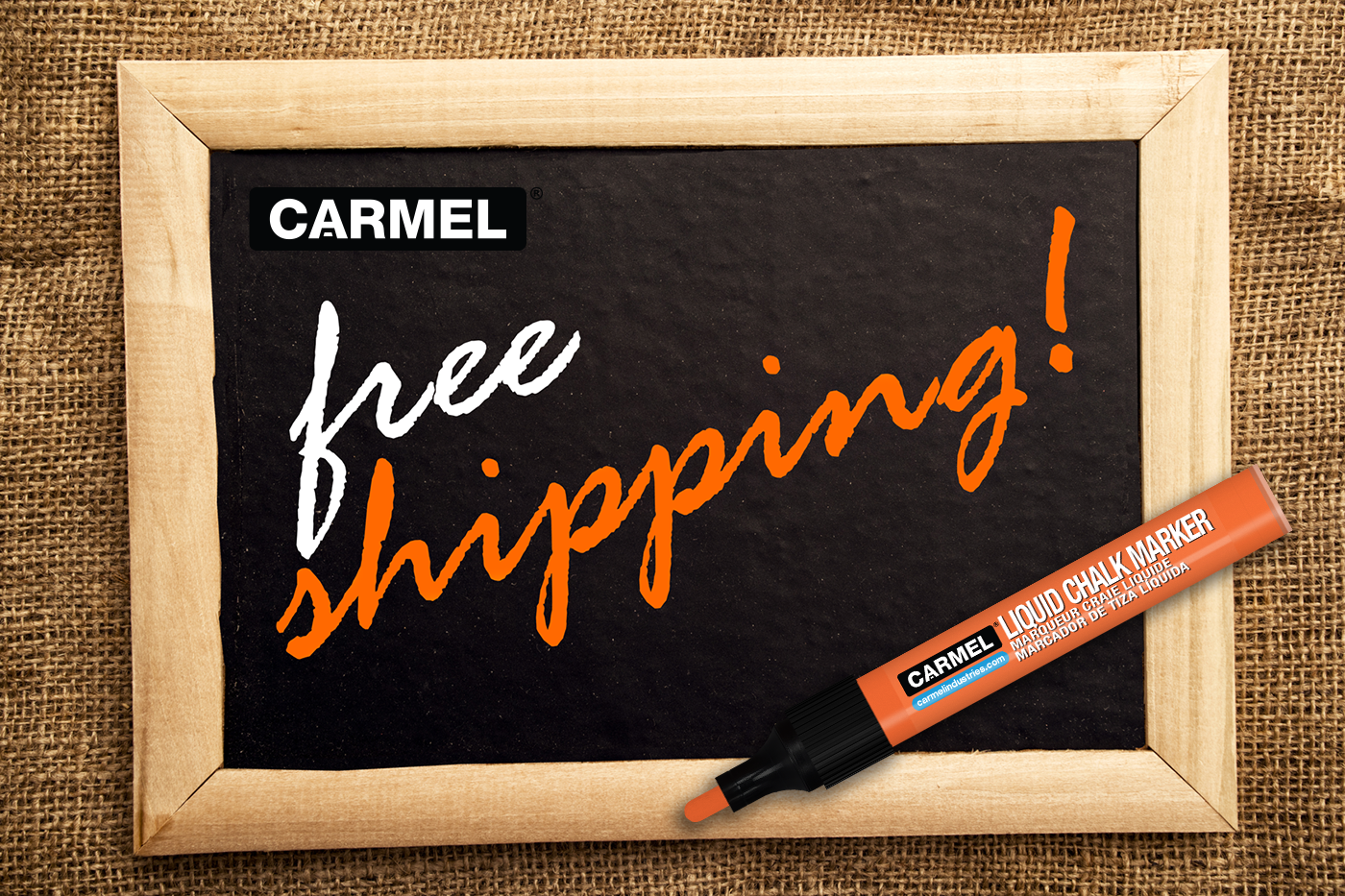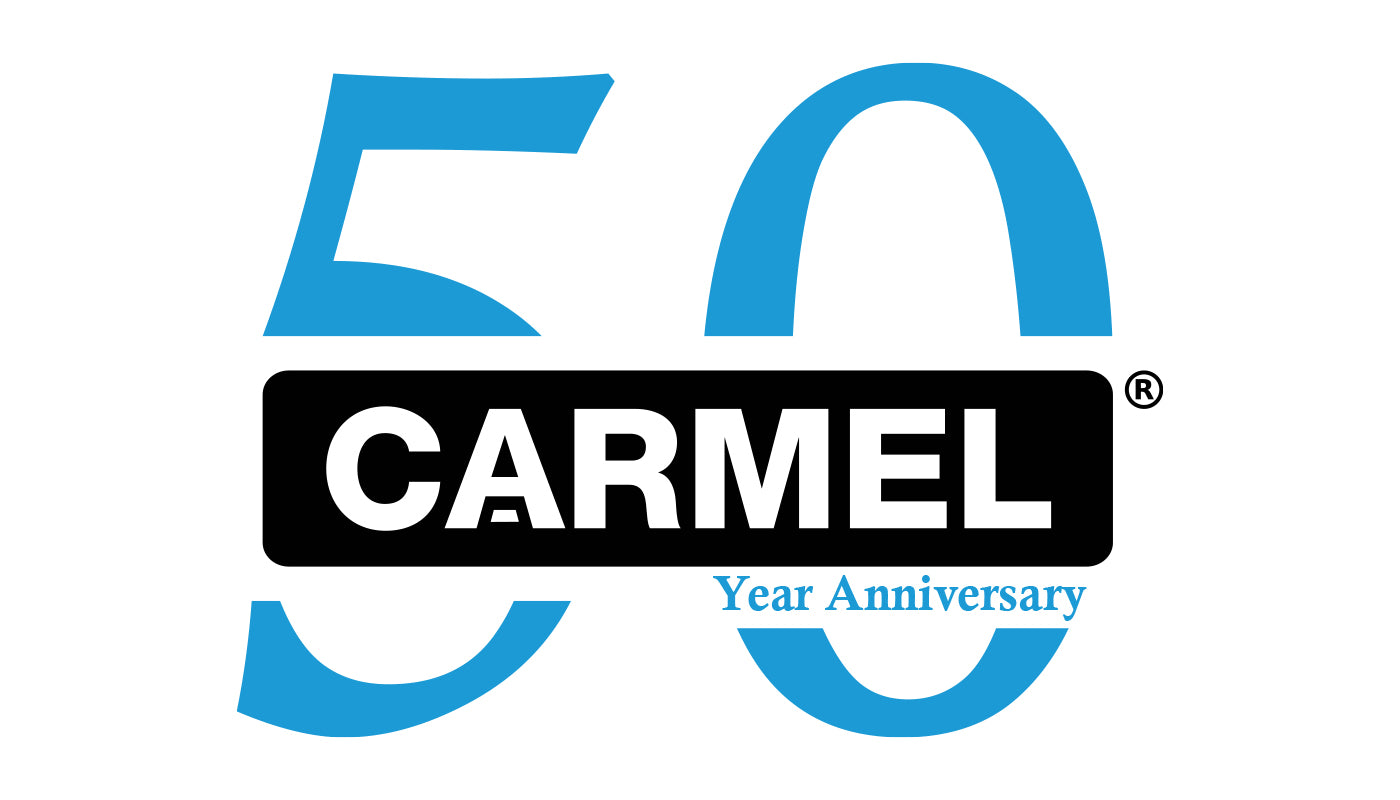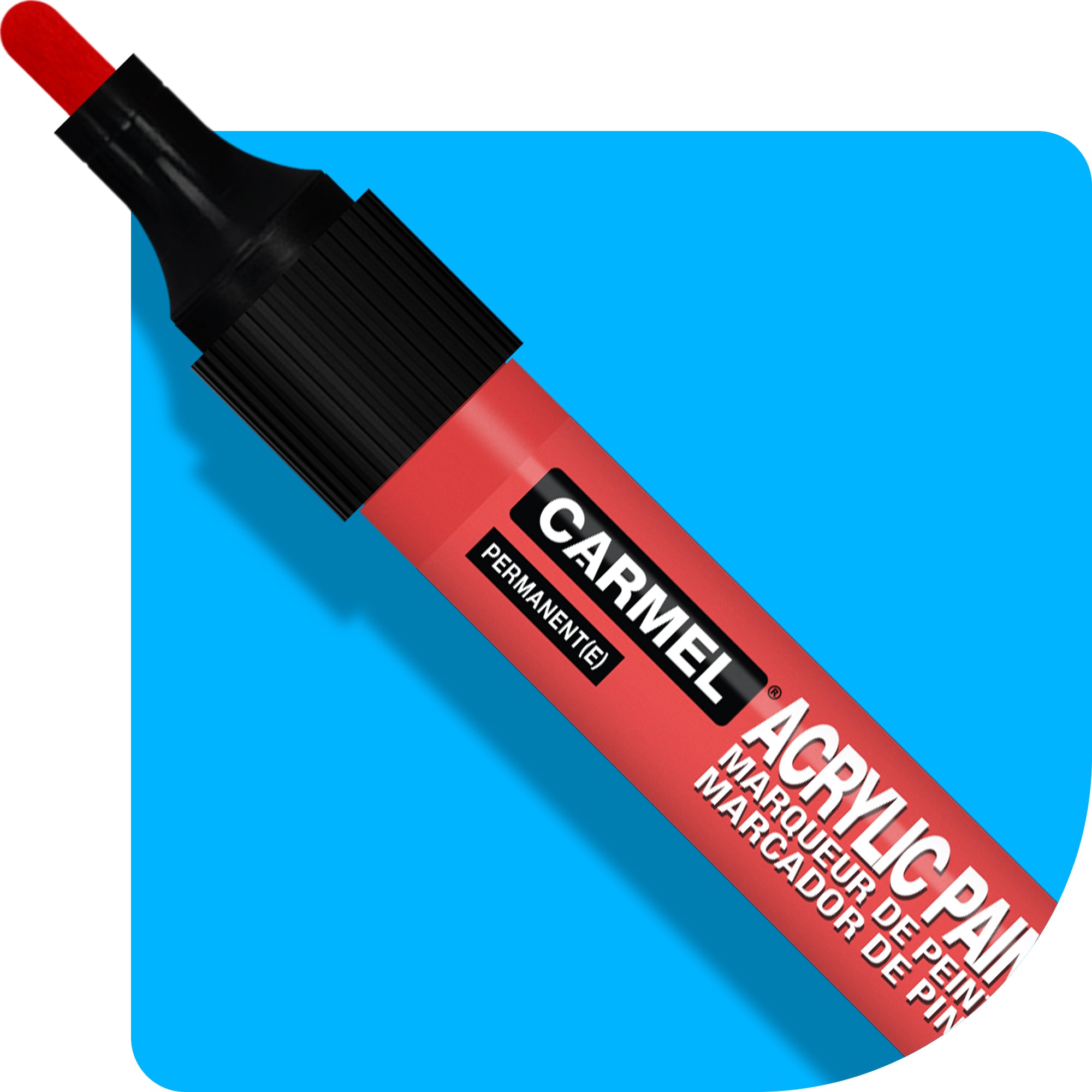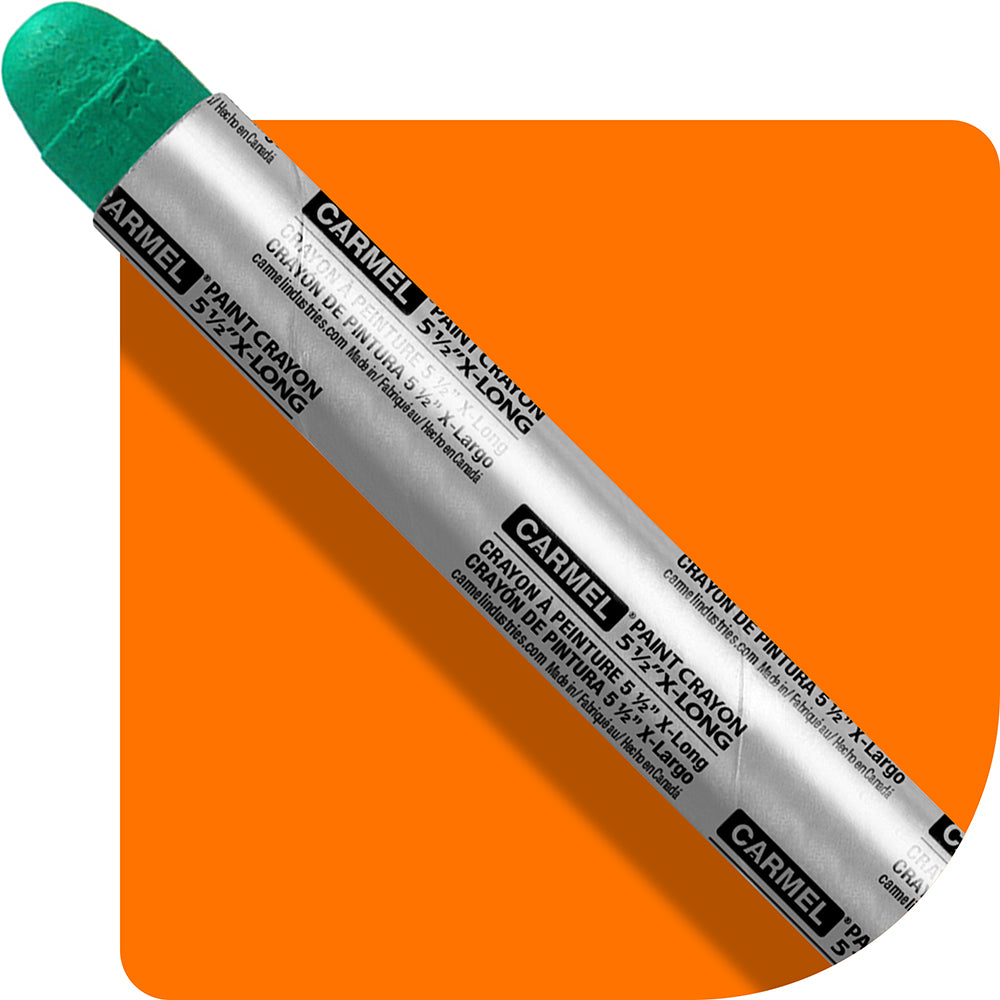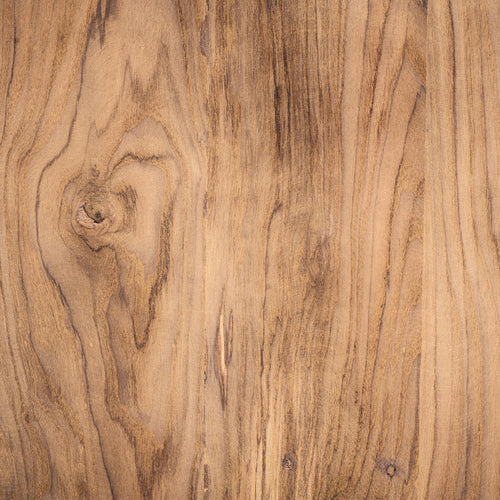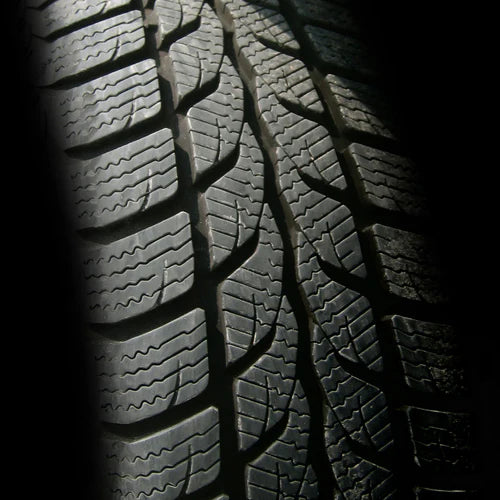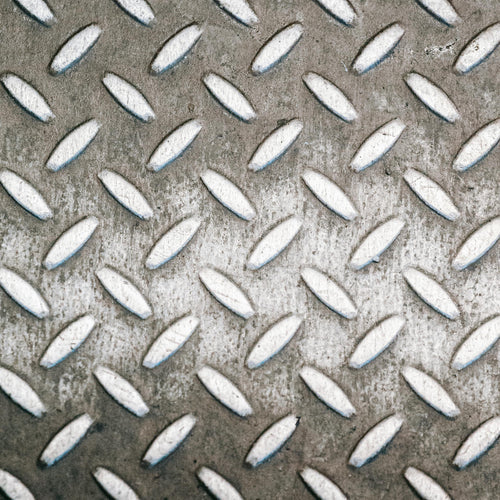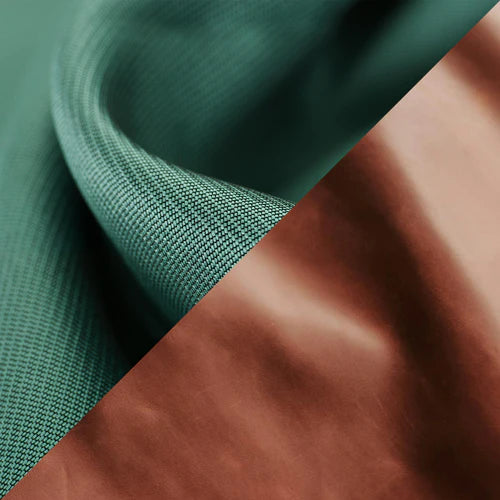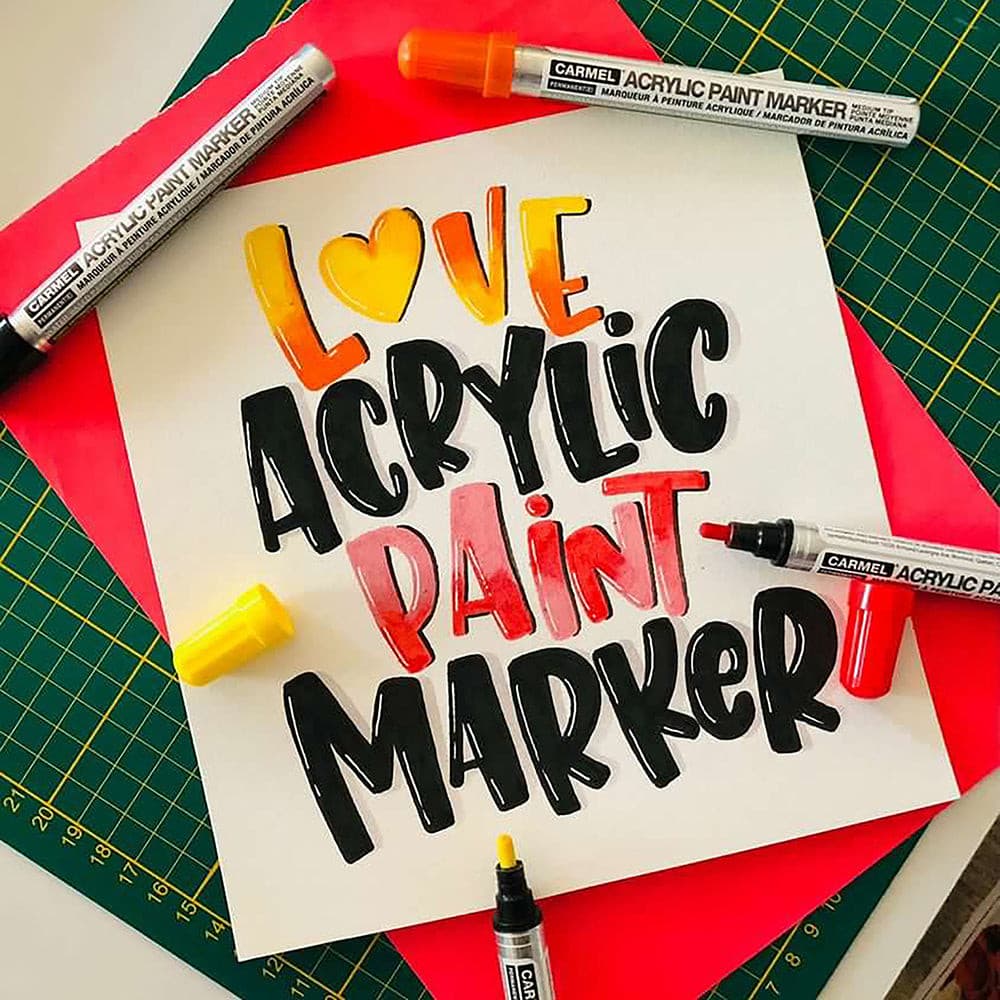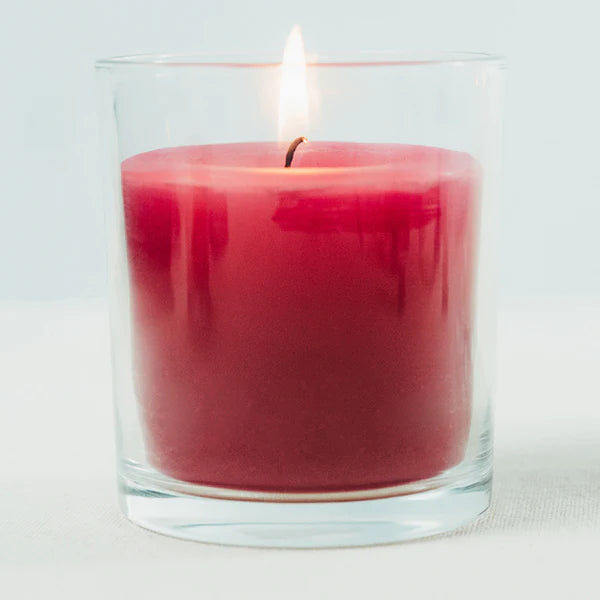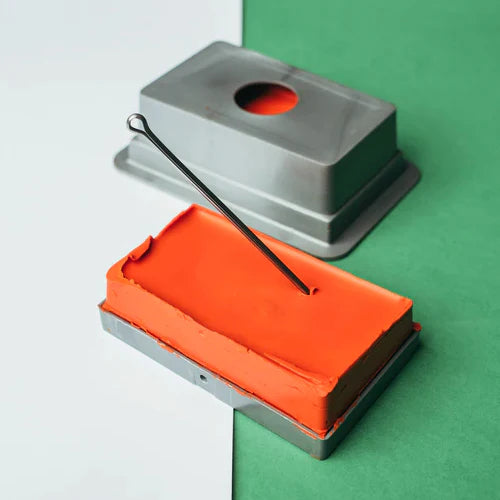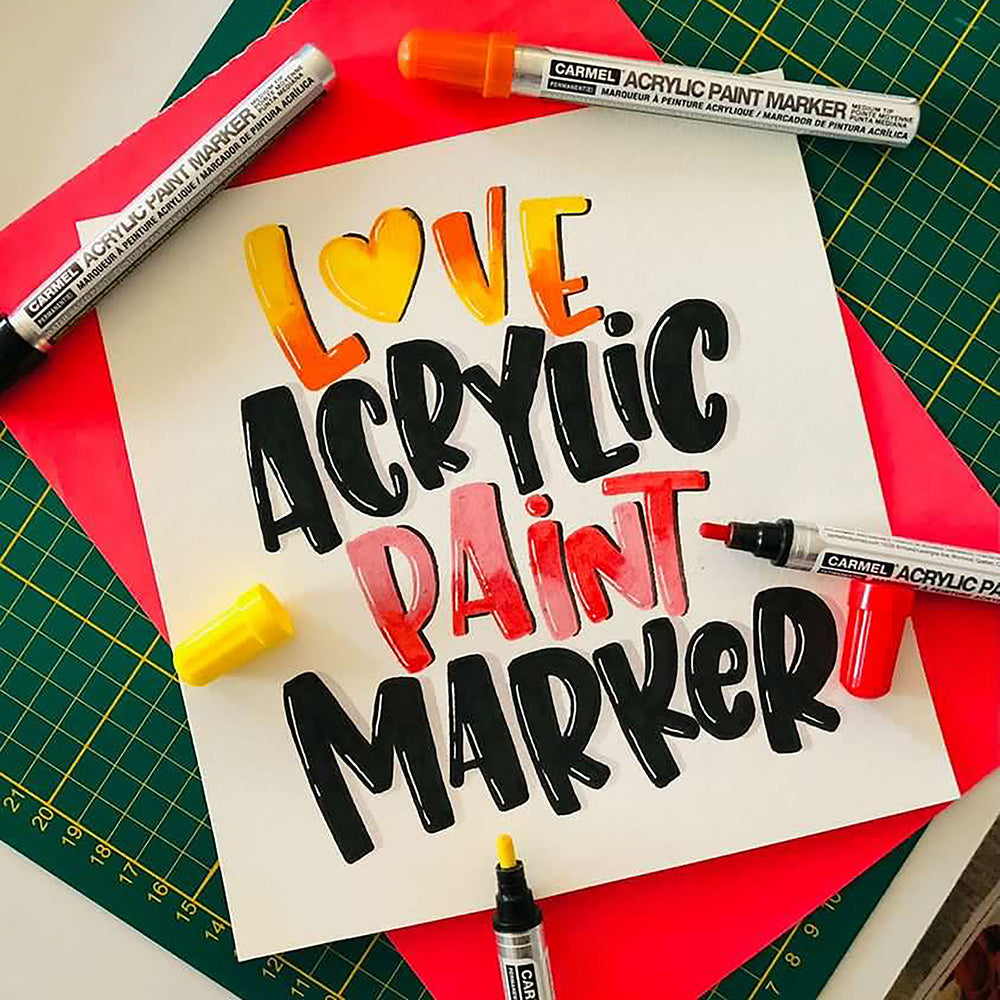Carmel’s Acrylic Paint Markers apply vivid paint in a variety of colors to multiple types of surfaces. Unlike our standard markers like the Paint Marker Classic, Carmel Acrylic Paint Markers contain paint which is formulated differently. The main difference is that our Acrylic Paint Markers are free of VOCs (Volatile Organic Compounds) and therefore ideal for indoor use.

What kind of paint do Carmel acrylic paint markers apply?
What’s a solvent?
If you remember your high school chemistry class, a solvent is a substance that dissolves another substance (the solute). Together they form a solution. For example, mixing a tablespoon of sugar (solute) into a glass of water (solvent) results in a sweet liquid (solution).
From a chemistry perspective, many substances can be solvents. Water is a great example of a solvent. However, from an industry perspective (especially in the arts), the word solvent has come to mean a harsh liquid substance, often having a strong smell. Using this definition, one might refer to an oil-based paint as containing a solvent – in this case one would assume that the paint has a harsh smell and might be toxic. But from a scientific perspective, we can see that all paint contains some kind of solvent, even if it’s water.
Continuing with the arts-world terminology, oil-based paint is often contrasted with acrylic paint, which is seen as less harsh and more user-friendly. Many people often associate acrylic paint with water-based paint, which is not necessarily always the case. The acrylic part refers to the solute (an acrylic pigment) and the water-based part refers to the solvent in this case. As we’ve seen with our Acrylic Paint Markers, just because a marker applies acrylic paint doesn’t mean it’s using a water-based solvent. In fact, each marker is different, and it’s up to you to find out exactly what goes into it.
 Acrylic vs. Oil-based paint markers: what’s the difference?
Acrylic vs. Oil-based paint markers: what’s the difference?
Traditional oil paint is made from a solution of oil and pigment. The oil could be any variety of vegetable oil, like linseed or even walnut oil, and the pigment is usually derived from minerals, plants or even animals.
In addition to these ingredients, binding and thinning agents are often mixed in to even out and stabilize the solution. That’s where these paints get their reputation for having a strong smell – think of substances turpentine and paint thinner.
Acrylic paints are made with synthetic pigment. The term “acrylic” describes a group of chemicals that are essentially plastics (or polymers, to use a chemistry term). These pigments can be dissolved in different types of solvents, including water-based ones.
Unlike oil paints, acrylic paints don’t require harsh additives to function properly. That’s why acrylic paints are normally associated with less toxic, more user-friendly products. They are usually safe for children to use, and perfect for painting indoors.
What are Carmel markers made with?
Technically, most Carmel paint markers contain paint made with acrylic pigments. However, these paint markers differ in the solvents they use. What we call our Acrylic Paint Marker contains paint made with acrylic pigments dissolved in an alcohol-like solvent. We gave them this name to differentiate them from our Classic Paint Markers and Industrial Specialty Paint Markers which use different solvents. Remember, in the arts world, “acrylic” means safer, easier to use, and non-toxic.
What are the benefits of Carmel acrylic paint markers?
The main benefit of our Acrylic Paint Markers is that they are VOC free. VOCs (Volatile Organic Compounds) are potentially dangerous compounds. They can accumulate in the atmosphere and can be hazardous when inhaled. They are also potentially flammable and/or explosive.
Carmel Acrylic Paint Markers are ideal for indoor use, and safe to use around children or pets.
Other benefits of our Acrylic Paint Markers include:
- Xylene and toluene free (also potentially harmful compounds)
- Lead-free
- Light-fast
- Marks on a variety of surfaces
- Creates opaque, permanent markings
- Markings are UV and weather-resistant
- Markings are waterproof when dry

Do Carmel acrylic paint markers smell?
This is a great question. After inhaling several markers in our in-house controlled laboratory, we have determined that Carmel Acrylic Paint Markers have a slight alcohol-like smell. It is not a harsh smell and will definitely not spread throughout a closed room.
For your health and safety, we do not recommend directly inhaling any paint marker product.
What applications are Carmel acrylic paint markers used in?
These markers are great for arts and crafts. You can use them for the following projects:
- Painting on glasses (markings will resist hand washing with regular soap)
- Customizing phone cases, pencil cases, etc.
- Customizing apparel, e.g. sneakers, handbags, etc.
- Creating unique art pieces on paper, canvas, cardboard, etc.

Since they are reliable high-quality products, Carmel Acrylic Paint Markers are often used in the following industries:
- Auto dealerships
- Commercial signage
- Automotive and other vehicle/ship manufacturing
- Industrial manufacturing
- Metal fabrication and welding
- Construction
What surfaces are Carmel acrylic paint markers best suited for?
Carmel Acrylic Paint Markers work great on a wide variety of surfaces, but they are ideally suited to smooth, non-porous materials, including:
- Glass and ceramics
- Plastic
- Metal/steel/iron
- Rubber and tires
- Pipes and tubes
- Plaster
- Smooth wood
- Canvas
 Can the tips of Carmel acrylic paint markers be replaced?
Can the tips of Carmel acrylic paint markers be replaced?
Yes. Acrylic Paint Marker tips (nibs) come in a variety of sizes, from 3/32” (2.38mm) to 3/16” (5mm), for total control between fine and bold line marking. They are sold separately and can be easily replaced.
What are the different kinds of Carmel acrylic paint markers?
We offer three Acrylic Paint Markers, differentiated by their tip sizes. Each will create different types of lines.
Acrylic Paint Marker Fine Tip
This valve-activated acrylic paint marker applies permanent water-based acrylic paint to a variety of surfaces. It can be used to create fine lines.
Acrylic Paint Marker Wide Tip
Large size paint marker with a 3/8” x 5/8” marking nib for bold line marking.
Acrylic Paint Marker Medium Tip
Contains durable polyurethane paint for permanent vivid markings. Ideal for use where VOCs are a concern.
